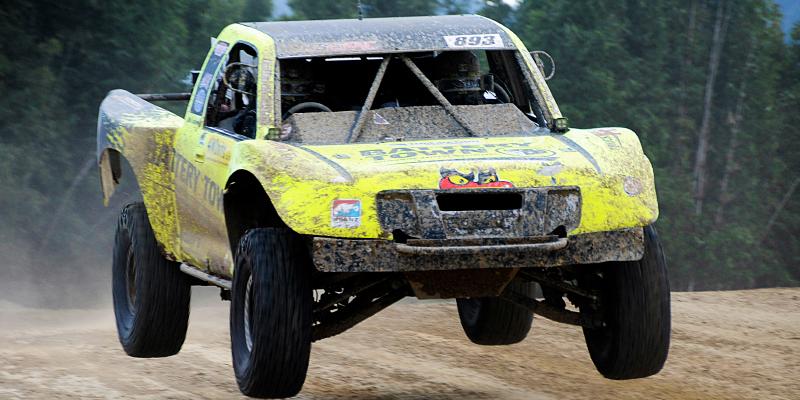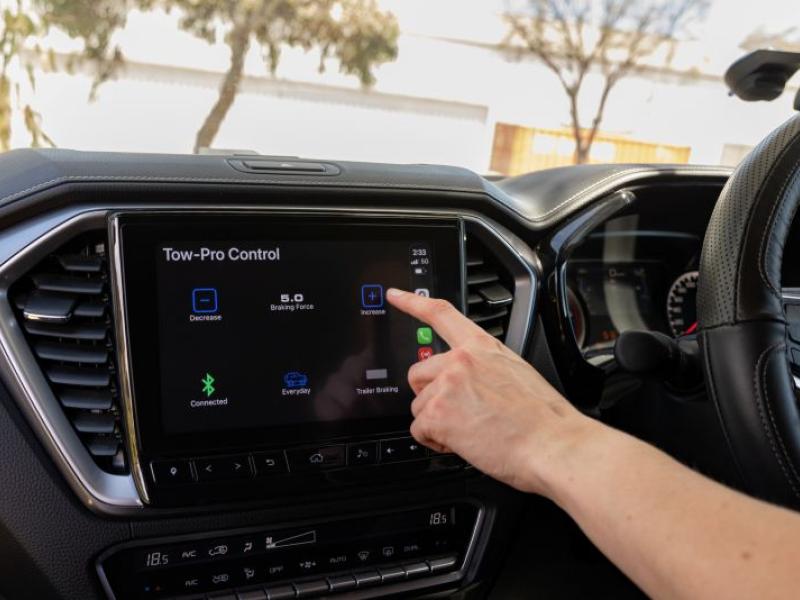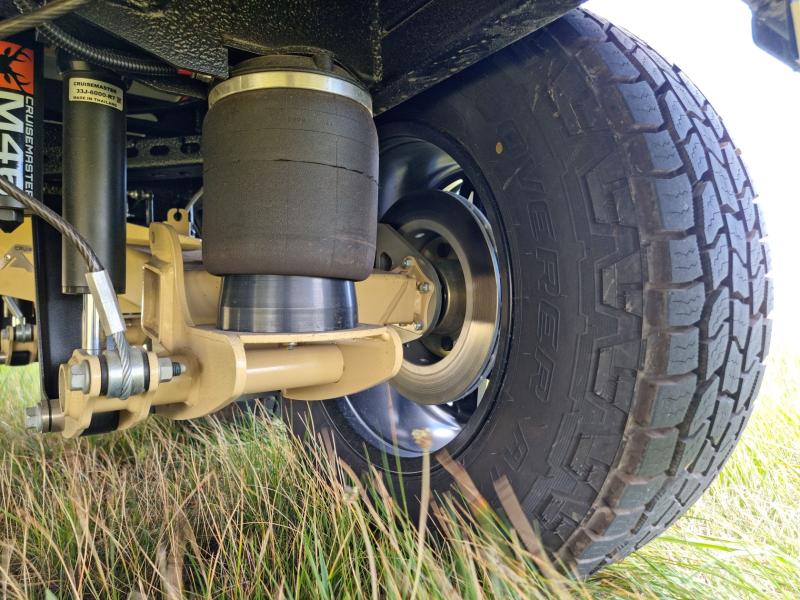‘Broke the ute’s diff over the weekend, so I couldn’t come in today,’ is hardly the sort of excuse a Boss wants to hear. Yet as Sean Willmot finds out, broken diffs and other driveline component failures are amongst the commonest failures on later model Utes and/or 4WDs.
It isn’t the easiest thing to break a modern 4WD vehicle. Oh sure, it CAN be done, but then you’d have to be some sort of monetary masochist to do it deliberately – they’re not cheap to fix!
Today’s 4WDs don’t typically go places where they would expect to come to grief, which is a far cry from the earlier days of rough and tumble “let’s take the ute flying through the forest” activities as made famous by Toyota NZ’s infamous Barry Crump and Scotty ads of the ‘80s.
Back then of course, 4WDs – and particularly the utes – could be meddled with by all who owned them, frequently in the backyard, almost as part of a mechanical coming of age for many owners.
Why did we do it? Because we could, because it was fun and because we were able to go off the beaten track and heck, you could even get into some serious 4WD competitions with your mates. So, of course, your ute or 4WD had to be the best you could make it so it would survive in the heat of ‘trial-by-off-road-combat.’
All change!
And then something happened. Suddenly, utes and 4WDs started to become more sophisticated and as they did, they became cool and fashionable things to own to the point that people who spent their days going to and from work started buying them as day-to-day drive vehicles.
And at that point, manufacturers started making 4WD vehicles and the one-time roughhouse utes more acceptable to the tarmac drivers, who demanded more sophistication from their vehicles.
Certainly, the vehicles were still capable of venturing out to – and into – the back and beyond, but as they became more sophisticated, they also became more expensive and more owners were reluctant to ‘go bush’, especially since their vehicles took over as daily drivers.
The ‘80s were better!
As far as vehicles before that, well, things were a little easier to meddle with, which is why you’ll see big, older 4x4s running around with massive tyres and body lift kits, winches, lights and bumper unit assemblies to carry them, snorkel kits, and suspension and differential units – armour plated (presumably) all exposed for all the world to see.
And the vehicles themselves are likely to be first registered sometime in the 80s or early 90s. Back then, complex and sophisticated off-road aids were rare, and cautions from manufacturers even rarer.
A little mechanical knowledge was sufficient to turn a recreational vehicle into a 4WD weapon and it seemed the Nana-State was content to largely ignore 4x4 modifications as long as the vehicle was WoF’able and your registration and RUCs were paid up.
Today though, it’s a lot harder to modify your ute or 4WD and get it legally allowed to run on the road.
Not only do law enforcement agencies make it a bit more challenging, the manufacturers themselves have put the kybosh on major modifications, with the threat of invalidated warranties after non-approved modifications are made.
Oh, but they were clever about it, producing an increased number of recommended manufacturer-supplied accessories which you buy at the point of sale of the vehicle itself.
Adapt or die...
For the independent aftermarket supplier of 4WD accessories, life could have been very grim at that point, but those who have survived, like Stuart Cocking of Auckland’s Motortech 4x4, are reasonably philosophical about it.
“We have had to adapt to the changing market,” he says, “but then everyone else has to do the same when the market changes.
“You do have to do your homework and work with well-respected and recognised brands when it comes to aftermarket equipment.
“These brands initially established themselves as experts by being original equipment suppliers to some of the major auto manufacturers, making it hard for those manufacturers to ‘outlaw’ them.
“Buying from reputable brands is the best solution for the customer,” Stuart adds. “We’ve seen SUVs come in with winches on the ‘affordable aftermarket’ front bumper. It’s come to us, because the bumper unit is flopping about on the body, because the customer couldn’t get it fitted properly, or it was fitted but couldn’t take the weight of the winch.”
The watchword from Stuart and his team is to not cut corners in terms of cost. It seems that in the field of aftermarket accessorising the phrase “you get what you pay for’’ rings true every time, and if a component is cheap, then there’s a reason it is.
As to components which are marketed by independent and reputable aftermarket suppliers, with the modern vehicles becoming more capable in a broader range of applications, tolerances for modifications are considerably narrower.
So much so that a once legit 4-inch lift for example, has effectively been reduced to a 50mm lift as the maximum for the most part.
A lift over 50mm frequently requires low volume vehicle certification, and frankly, it becomes more of a problem than the end result justifies, when most accessories are largely cosmetic.
At one point, those big lifts were useful when it came to off-road competition,” says Stuart, “but we are seeing less and less competition work. It seems competitors are taking more care with their vehicles,” he says.
Expert advice
What then, should the modern 4WD/ute owner be mindful of when it comes to actually making modifications to their working day-to-day driving 4WD or ute?
“It will depend on so many things,” says Stuart. “There are weak points on different vehicles and its best to come and talk to an expert specialist on a case-by-case basis as to known problem areas.
“If I had to comment on one common issue, it would be drivetrains. They don’t usually fail as a result of a manufacturing fault, but more by operator error – people not understanding what a 4WD system is capable of and how it works.
“Paying attention to what the manufacturer recommends in terms of oil types, service intervals and general maintenance considerations, is another crucial element for the modern 4WDer.”
While this sounds like a common-sense approach to vehicle ownership, it is something which contributes to significant – and often costly – repairs in the future and its surprising how many repairs have to be done due to lack of maintenance.
“The other issue which is related to this,” adds Stuart, “is running in times. Modern cars don’t need a lot of this, and it’s seldom mentioned, but for utes and 4WDs purchased with the intention of towing, we would suggest 1000 to 1500km break-in time before you start towing.
‘’So many buyers pick up their vehicle and immediately hitch it to something – often something large which stresses the towing vehicle – and cane it on a long-distance tow, which can prematurely and potentially damage the engine, transmission and driveline.”
Know your vehicle’s limitations
Stuart points out that even with what appears to be strong components such as differentials for example, its important that drivers understand what the diff is supposed to do and how to use it to its best ability.
For instance, just because your vehicle is equipped with a locking differential does not mean you can attack hill climbs at high speed, in fact, a slower approach will work more effectively anyway.
If you charge at a hill and you lose contact on one wheel causing it to come up, then come down – hard – with the diff lock engaged, the shock of that impact travels all through the driveline and can result in catastrophic damage.
“Knowing 4WD systems, limitations and how the components work is something anyone looking to go off-road should be familiar with,” says Stuart, “and remembering that because a vehicle has a tow bar, there are considerations to be taken into account in this regard too.
“Again, talking to an independent off-road specialist about your vehicle will give you the best chance of preserving your investment.”







